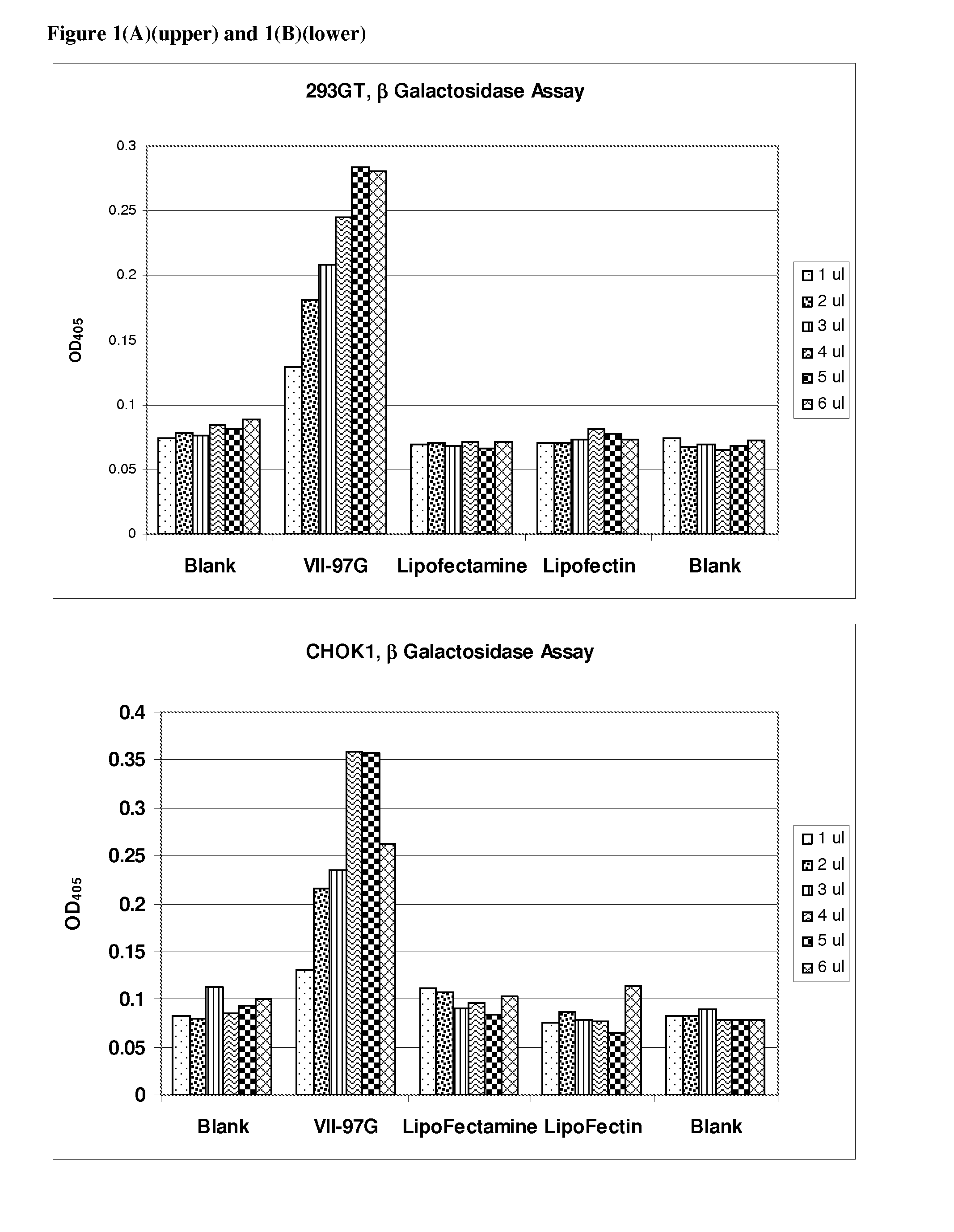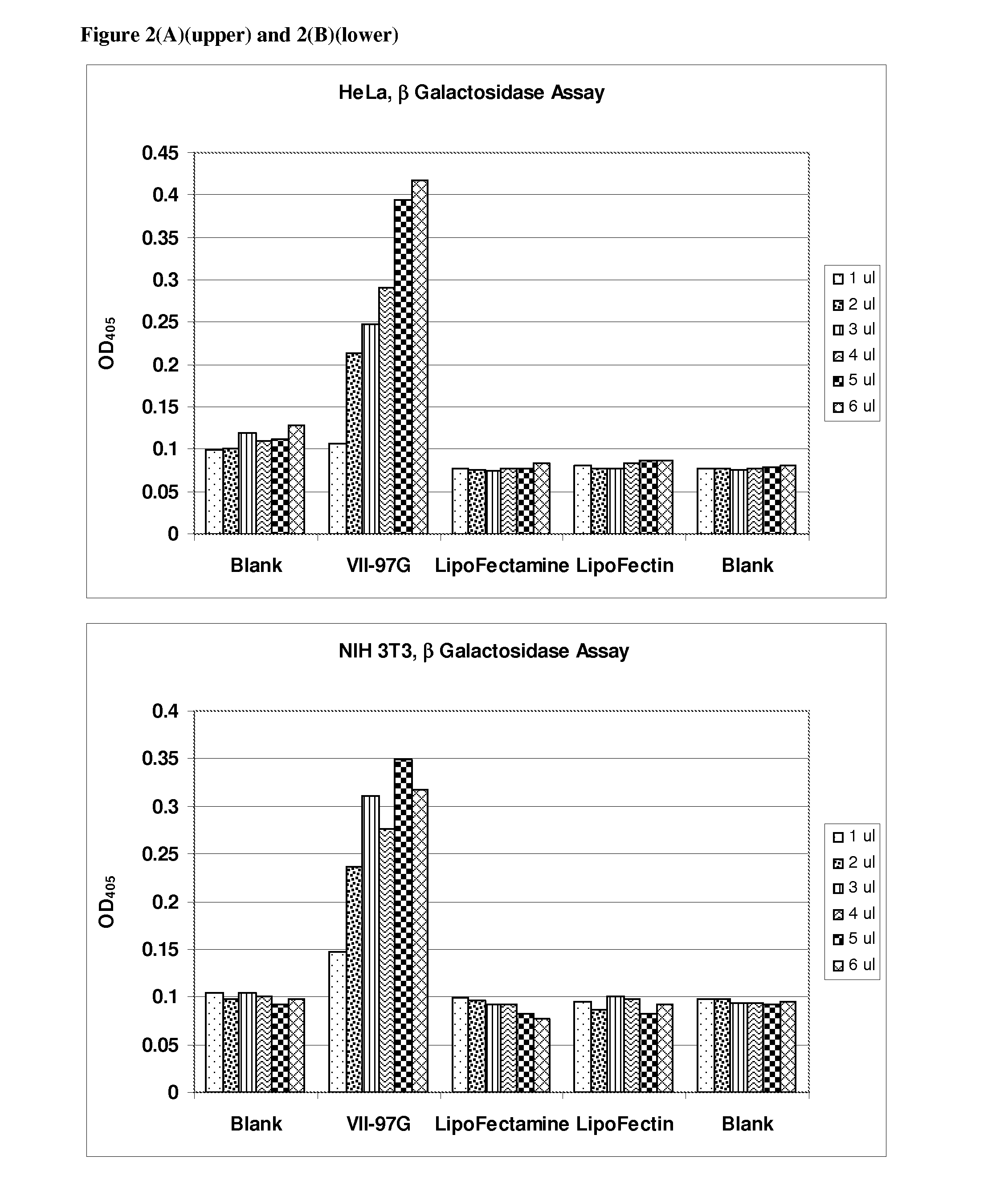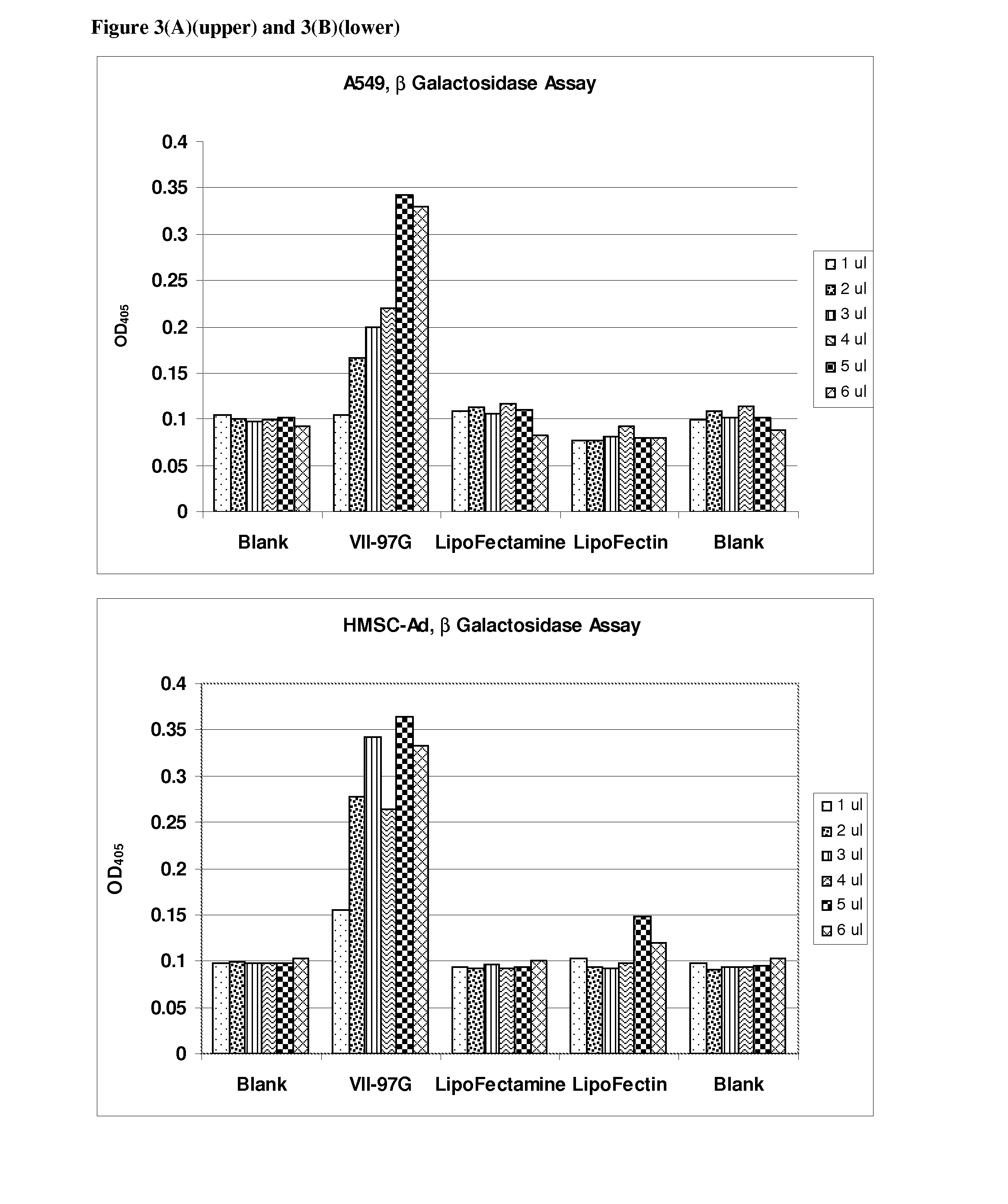Agents for Improved Delivery of Nucleic Acids to Eukaryotic Cells
a technology of nucleic acids and agents, applied in the preparation of amino-hyroxy compounds, biocide, genetic material ingredients, etc., can solve the problems of not being universally effective in all cell types, cationic lipids alone are not effective or only partially effective, and methods that do not work for all cell types, etc., to achieve the effect of improving the efficiency of introducing macromolecules
- Summary
- Abstract
- Description
- Claims
- Application Information
AI Technical Summary
Benefits of technology
Problems solved by technology
Method used
Image
Examples
example 1
Synthesis of Compounds 7-9
[0124]Dimethyl tartrate (1)(7.12 g) was combined with 50 ml of methylamine solution in THF (2M) in a high pressure reactor tube. The tube was heated at 70° C. overnight (22 hrs). The reaction mix was cooled to room temperature and kept at 4° C. for about 1 hour. The precipitate was filtered and washed twice with 50 ml of THF to obtain compound (2, R2=Me) as a white solid material.
[0125]NaH (1 g; 60% oil dispersion) was triturated twice with hexane (10 ml). Dimethylaminotartaramide (2)(1.78 g) was added followed by THF (500 ml). The reaction mix was heated under reflux overnight, after which oleyl mesylate was dissolved in 50 ml THF and added to the reaction mix. The reaction mix was heated under reflux for 3-5 days. The reaction was stopped when TLC analysis (silica gel, ethyl acetate hexane 1:1) indicated that there was no change in the pattern of reaction products. The reaction mixture was cooled and water (400 ml) was added. The organic (top) layer was s...
example 2
Formulation of Cationic Lipids into Liposomes
[0129]The liposome was formulated using reverse evaporation. Thus, 6.32 mg of the TFA salt of Compound (8, R1=oleyl, R2=methyl) and 13.67 mg of DOPE (1:4 molar ration of TFA salt of Compound 8: DOPE) were combined and placed in a round bottom flask. The lipid mixture was dissolved in 2 ml of chloroform. 10 ml of water was added to the chloroform solution. The chloroform was removed under vacuum on a rotary evaporator to obtain a liposome solution. The solution was adjusted to 10 ml to obtain a 2 mg / ml liposome solution. It was designated as VII-97-G. Formulations where the molar ratios varied from 2:1 to 1:16 (TFA salt of Compound (8, R1=oleyl, R2=methyl): DOPE) were prepared in this manner.
example 3
Transfection Protocol
[0130]Transfection of 8 different cell types with β-galactosidase reporter plasmid pCMV.SPORT-β-gal was carried out as follows:
[0131]Cells were plated in 96-well plates with 100 μl of media containing 5-10% fetal calf serum the day prior to transfection such that a desired confluency (70%-95%) was achieved. The following day a transfection agent that included a liposomal composition of the lipid VII-97-G and DNA were mixed in Opti-MEM to form DNA / lipid complexes. Complexes were formed by adding various amounts of lipids (1 μl to 6 μl to 50 μl of Opti-MEM) DNA (100 ng) was added to 50 μl Opti-MEM. The DNA and lipid solutions were then mixed to form DNA lipid complexes. The complexes were incubated for at least 20 minutes after which 10 μl DNA / lipid complexes were added to cells. Lipofectin and Lipofectamine (Invitrogen, Carlsbad, Calif.) were used as described by the manufacturer.
[0132]Cells were incubated for an additional 24 hours to allow expression of the pla...
PUM
| Property | Measurement | Unit |
|---|---|---|
| temperature | aaaaa | aaaaa |
| concentration | aaaaa | aaaaa |
| temperature | aaaaa | aaaaa |
Abstract
Description
Claims
Application Information
 Login to view more
Login to view more - R&D Engineer
- R&D Manager
- IP Professional
- Industry Leading Data Capabilities
- Powerful AI technology
- Patent DNA Extraction
Browse by: Latest US Patents, China's latest patents, Technical Efficacy Thesaurus, Application Domain, Technology Topic.
© 2024 PatSnap. All rights reserved.Legal|Privacy policy|Modern Slavery Act Transparency Statement|Sitemap



